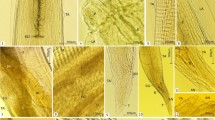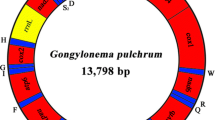Abstract
Many recent studies have been focused on prevalence and impact of two helminth parasites, eyeworm Oxyspirura petrowi and caecal worm Aulonocephalus pennula, in the northern bobwhite quail (Colinus virginianus). However, few studies have attempted to examine the effect of these parasites on the bobwhite immune system. This is likely due to the lack of proper reference genes for relative gene expression studies. Glyceraldehyde 3-phosphate dehydrogenase (GAPDH) is a glycolytic enzyme that is often utilized as a reference gene, and in this preliminary study, we evaluated the similarity of bobwhite GAPDH to GAPDH in other avian species to evaluate its potential as a reference gene in bobwhite. GAPDH was identified in the bobwhite full genome sequence and multiple sets of PCR primers were designed to generate overlapping PCR products. These products were then sequenced and then aligned to generate the sequence for the full-length open reading frame (ORF) of bobwhite GAPDH. Utilizing this sequence, phylogenetic analyses and comparative analysis of the exon–intron pattern were conducted that revealed high similarity of GAPDH encoding sequences among bobwhite and other Galliformes. Additionally, This ORF sequence was also used to predict the encoded protein and its three-dimensional structure which like the phylogenetic analyses reveal that bobwhite GAPDH is similar to GAPDH in other Galliformes. Finally, GAPDH qPCR primers were designed, standardized, and tested with bobwhite both uninfected and infected with O. petrowi, and this preliminary test showed no statistical difference in expression of GAPDH between the two groups. These analyses are the first to investigate GAPDH in bobwhite. These efforts in phylogeny, sequence analysis, and protein structure suggest that there is > 97% conservation of GADPH among Galliformes. Furthermore, the results of these in silico tests and the preliminary qPCR indicate that GAPDH is a prospective candidate for use in gene expression analyses in bobwhite.




Similar content being viewed by others
Data availability
All data generated or analyzed during this study are included in this manuscript. Sequencing data obtained from this study has been submitted in DNA Data Bank of Japan (DDBJ) (Acc No. LC569866).
References
Hernández F, Guthery FS (2012) Beef, brush, and bobwhites: quail management in cattle country, 2nd edn. Texas A&M University Press, College Station
Johnson JL, Rollins D, Reyna KS (2012) What’s a quail worth? A longitudinal assessment of quail hunter demographics, attitudes, and spending habits in Texas. Natl Quail Symp Proc 7:294–299
Nice MM (1910) Food of the bobwhite. J Econ Entomol 3:295–313
Brennan LA (1991) How can we reverse the northern bobwhite population decline? Wildl Soc Bull 19:544–555
Hernández F, Brennan LA, DeMaso SJ, Sands JP, Wester DB (2013) On reversing the northern bobwhite decline: 20 years later. Wildl Soc Bull 37:177–188
Sauer JR, Hines JE, Fallon JE, Pardieck KL, Ziolkowski DJ Jr, Link WA (2013) The North American Breeding Bird Survey, results, and analysis 1966–2013. USGS Patuxent Wildlife Research Center, Laurel
Rollins D (2007) Quails on the rolling plains. In: Brennan L (ed) Texas quails: ecology and management. Texas A&M University Press, College Station, pp 117–141
Olsen AC, Fedynich AM (2016) Helminth infections in northern bobwhites (Colinus virginianus) from a legacy landscape in Texas, USA. J Wildl Dis 52:576–581
Dunham NR, Henry C, Brym MZ, Rollins D, Helman RG, Kendall RJ (2017) Caecal worm, Aulonocephalus pennula, infection in the northern bobwhite quail, Colinus virginianus. Int J Parasitol Parasites Wildl 6:35–38
Henry C, Brym MZ, Kendall RJ (2017) Oxyspirura petrowi and Aulonocephalus pennula infection in wild northern bobwhite quail in the Rolling Plains ecoregion, Texas: possible evidence of a die-off. Arch Parasitol 1:109
Bruno A, Fedynich A, Rollins D, Wester D (2018) Helminth community and host dynamics in northern bobwhites from the Rolling Plains ecoregion, USA. J Helminthol 93:567–573
Bruno A (2014) Survey for Trichomonas Gallinae and assessment of helminth parasites in northern bobwhites from the Rolling Plains ecoregion. Thesis, Texas A&M University, Kingsville
Dunham NR, Soliz LA, Fedynich AM, Rollins D, Kendall RJ (2014) Evidence of an Oxyspirura petrowi epizootic in northern bobwhites (Colinus virginianus), Texas, USA. J Parasitol 50:552–558
Kistler WM, Parlos JA, Peper ST, Dunham NR, Kendall RJ (2016) A quantitative PCR protocol for detection of Oxyspirura petrowi in northern bobwhites (Colinus virginianus). PLoS ONE 11:e0166309
Kalyanasundaram A, Blanchard KR, Kendall RJ (2017) Molecular identification and characterization of partial COX1 gene from caecal worm (Aulonocephalus pennula) in Northern bobwhite (Colinus virginianus) from the Rolling Plains ecoregion of Texas. Int J Parasitol Parasites Wildl 6:195–201
Kalyanasundaram A, Henry C, Brym MZ, Kendall RJ (2018) Molecular identification of Physaloptera sp. from wild northern bobwhite (Colinus virginianus) in the Rolling Plains ecoregion of Texas. Parasitol Res 117:2963–2969
Blanchard KR, Kalyanasundaram A, Henry C, Brym MZ, Surles JG, Kendall RJ (2019) Predicting seasonal infection of eyeworm (Oxyspirura petrowi) and caecal worm (Aulonocephalus pennula) in northern bobwhite quail (Colinus virginianus) of the Rolling Plains ecoregion of Texas, USA. Int J Parasitol Parasites Wildl 8:50–55
Kalyanasundaram A, Blanchard KR, Henry BJ, Henry C, Brym MZ, Kendall RJ (2019) Quantitative analysis of northern bobwhite (Colinus virginianus) cytokines and TLR expression to eyeworm (Oxyspirura petrowi) and caecal worm (Aulonocephalus pennula) glycoproteins. Parasitol Res 118:2909–2918
Hong YH, Lillehoj HS, Lee SH, Dalloul RA, Lillehoj EP (2006) Analysis of chicken cytokine and chemokine gene expression following Eimeria acervulina and Eimeria tenella infections. Vet Immunol Immunopathol 114:209–223
Lillehoj HS, Kim CH, Keeler CL Jr, Zhang S (2007) Immunogenomic approaches to study host immunity to enteric pathogens. Poult Sci 86:1491–1500
Dalgaard TS, Skovgaard K, Norup LR, Pleidrup J, Permin A, Schou TW, Vadekær DF, Jungersen G, Juul-Madsen HR (2015) Immune gene expression in the spleen of chickens experimentally infected with Ascaridia galli. Vet Immunol Immunopathol 164:79–86
Bustin SA, Benes V, Garson JA, Hellemans J, Huggett J, Kubista M, Mueller R, Nolan T, Pfaffl MW, Shipley GL, Vandesompele J, Wittwer CT (2009) The MIQE guidelines: minimum information for publication of quantitative real-time PCR experiments. Clin Chem 55:611–622
Kozera B, Rapacz M (2013) Reference genes in real-time PCR. J Appl Genet 54:391–406
Thellin O, Zorzi W, Lakaye B, De Borman B, Coumans B, Hennen G, Grisar T, Igout A, Heinen E (1999) Housekeeping genes as internal standards: use and limits. J Biotechnol 75:291–295
Cheng WC, Chang CW, Chen CR et al (2011) Identification of reference genes across physiological states for qRT-PCR through microarray meta-analysis. PLoS ONE 6:e17347. https://doi.org/10.1371/journal.pone.0017347
Barber RD, Harmer DW, Coleman RA, Clark BJ (2005) GAPDH as a housekeeping gene: analysis of GAPDH mRNA expression in a panel of 72 human tissues. Physiol Genom 21:389–395
Eisenberg E, Levanon EY (2013) Human housekeeping genes, revisited. Trends Genet 29:569–574
Bruns GA, Gerald PS (1976) Human glyceraldehyde-3-phosphate dehydrogenase in man-rodent somatic cell hybrids. Science 192:54–56
Sirover MA (1999) New insights into an old protein: the functional diversity of mammalian glyceraldehyde-3-phosphate dehydrogenase. Biochim Biophys Acta 1432:159–184
Tristan C, Shahani N, Sedlak TW, Sawa A (2011) The diverse functions of GAPDH: views from different subcellular compartments. Cell Signal 23:317–323
Colell A, Green DR, Ricc JE (2009) Novel roles for GAPDH in cell death and carcinogenesis. Cell Death Differ 16:1573–1581
Butterfield DA, Hardas SS, Bader Lange ML (2010) Oxidatively modified glyceraldehyde-3-phosphate dehydrogenase (GAPDH) and Alzheimer disease: many pathways to neurodegeneration. J Alzheimers Dis 20:369–393
Butera G, Mullappilly N, Masetto F, Palmieri M, Scupoli MT, Pacchiana R, Donadelli M (2019) Regulation of autophagy by nuclear GAPDH and its aggregates in cancer and neurodegenerative disorders. Int J Mol Sci 20:2062
Halley YA, Dowd SE, Decker JE, Seabury PM, Bhattarai E (2014) A draft de novo genome assembly for the northern bobwhite (Colinus virginianus) reveals evidence for a rapid decline in effective population size beginning in the Late Pleistocene. PLoS ONE 9:e90240
Oldeschulte DL, Halley YA, Wilson ML, Bhattarai EK, Brashear W, Hill J, Metz RP, Johnson CD, Rollins D, Peterson MJ, Bickhart DM, Decker JE, Sewell JF, Seabury CM (2017) Annotated draft genome assemblies for the northern bobwhite (Colinus virginianus) and the scaled quail (Callipepla squamata) reveal disparate estimates of modern genome diversity and historic effective population size. G3 (Bethesda) 7:3047–3058
Stone EM, Rothblum KN, Alevy MC, Kuo TM, Schwartz RJ (1985) Complete sequence of the chicken glyceraldehyde-3-phosphate dehydrogenase gene. Proc Nat Acad Sci 82:1628–1632
Kumar S, Stecher G, Li M, Knyaz C, Tamura K (2018) MEGA7: MEGA X: molecular evolutionary genetics analysis across computing platforms. Mol Biol Evol 35:1547–1549
Kalyansundaram A, Brym MZ, Blanchard KR, Henry C, Skinner K, Henry BJ, Herzog J, Hay A, Kendall RJ (2019) Life-cycle of Oxyspirura petrowi (Spirurida: Thelaziidae), an eyeworm of the northern bobwhite quail (Colinus virginianus). Parasit Vectors 2:555. https://doi.org/10.1186/s13071-019-3802-3
Li YP, Bang DD, Handberg KJ, Jorgensen PH, Zhang MF (2005) Evaluation of the suitability of six host genes as internal control in real-time RT-PCR assays in chicken embryo cell cultures infected with infectious bursal disease virus. Vet Microbiol 110:155–165
Carvalho AV, Courousse N, Crochet S, Coustham V (2019) Identification of reference genes for quantitative gene expression studies in three tissues of Japanese quail. Genes (Basel) 10:197
Bradnam KR, Korf I (2008) Longer first introns are a general property of eukaryotic gene structure. PLoS ONE 3:e3093
Majewski J, Ott J (2002) Distribution and characterization of regulatory elements in the human genome. Genome Res 12:1827–1836
Jo BS, Choi SS (2015) Introns: the functional benefits of introns in genomes. Genom Inform 13:112–118
Rose AB (2019) Introns as gene regulators: a brick on the accelerator. Front Genet 9:672
Lawson MJ, Zhang L (2008) Housekeeping and tissue-specific genes differ in simple sequence repeats in the 5′-UTR region. Gene 407:54–62
Funding
This research received funding and support form Park Cities Quail Coalition (Grant No. 24A125) and the Rolling Plains Quail Research Foundation (Grant No. 23A751).
Author information
Authors and Affiliations
Corresponding author
Ethics declarations
Conflict of interest
The authors declare that they have no conflict of interest.
Ethical approval
This experiment was approved by Texas Tech University Animal Care and Use Committee under protocol 18044-05 and 16071-08. All bobwhites were trapped and handled according to Texas Parks and Wildlife permit SRP-0715-095.
Additional information
Publisher's Note
Springer Nature remains neutral with regard to jurisdictional claims in published maps and institutional affiliations.
Rights and permissions
About this article
Cite this article
Kalyanasundaram, A., Henry, B.J., Henry, C. et al. Molecular phylogenetic and in silico analysis of glyceraldeyde-3-phosphate dehydrogenase (GAPDH) gene from northern bobwhite quail (Colinus virginianus). Mol Biol Rep 48, 1093–1101 (2021). https://doi.org/10.1007/s11033-021-06186-3
Received:
Accepted:
Published:
Issue Date:
DOI: https://doi.org/10.1007/s11033-021-06186-3




